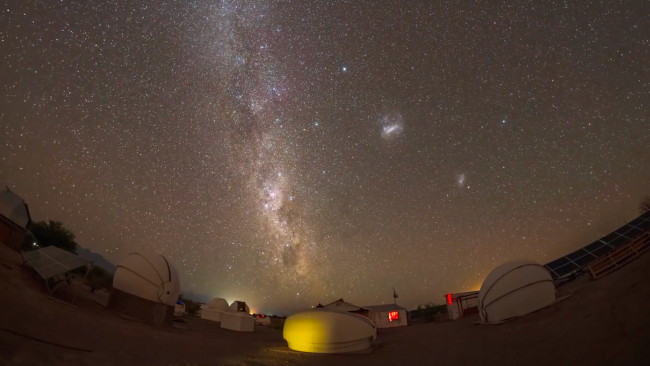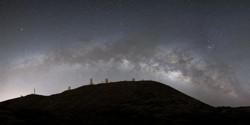Glossary term: Astronomical Observatory
Description: An astronomical observatory is a place designed and built exclusively to facilitate the scientific observation of extraterrestrial objects. It has specialized instruments such as telescopes, CCD cameras with special filters, computer rooms, and appropriate tools to analyze images and other kinds of scientific data. It usually has domes or dome-shaped roofs designed to protect the telescopes and other instruments from the weather. These roofs open and move to allow the observation of a certain region of the sky. The observatory may have special temperature controls to keep their mirrors or lenses and other equipment in the best condition. It should be noted the space-based telescopes are often referred to as space-based observatories (e.g. Chandra X-ray Observatory; Solar and Heliospheric Observatory)
See this term in other languagesTerm and definition status: This term and its definition have been approved by a research astronomer and a teacher
The OAE Multilingual Glossary is a project of the IAU Office of Astronomy for Education (OAE) in collaboration with the IAU Office of Astronomy Outreach (OAO). The terms and definitions were chosen, written and reviewed by a collective effort from the OAE, the OAE Centers and Nodes, the OAE National Astronomy Education Coordinators (NAECs) and other volunteers. You can find a full list of credits here. All glossary terms and their definitions are released under a Creative Commons CC BY-4.0 license and should be credited to "IAU OAE".
If you notice a factual error in this glossary definition then please get in touch.
Related Media
Chilean Nights
Credit: Robert Barsa/IAU OAE
License: CC-BY-4.0 Creative Commons Attribution 4.0 International (CC BY 4.0) icons
Teide Observatory
Credit: Curd-Christian Tengeler/IAU OAE
License: CC-BY-4.0 Creative Commons Attribution 4.0 International (CC BY 4.0) icons
Zodiacal Light over GTC Observatory
Credit: Amirreza Kamkar/IAU OAE
License: CC-BY-4.0 Creative Commons Attribution 4.0 International (CC BY 4.0) icons











